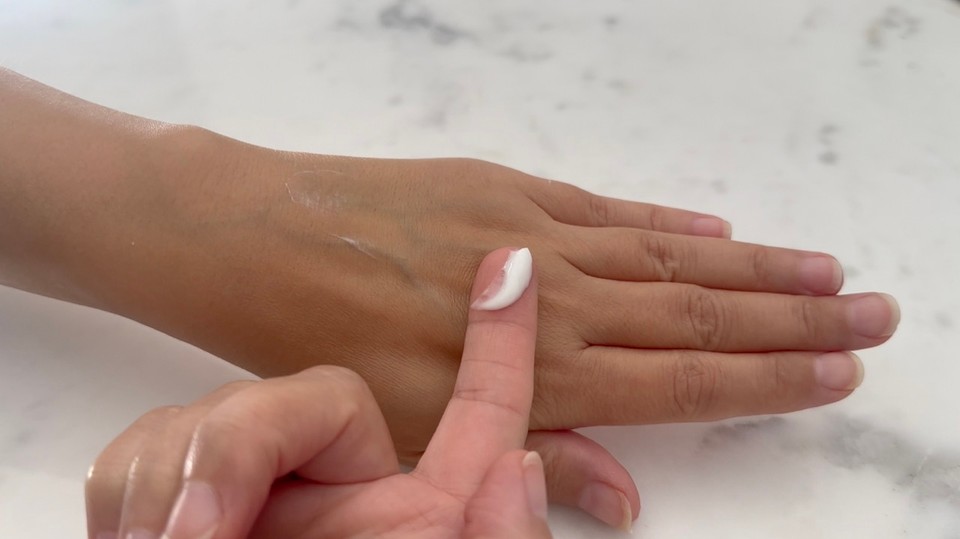Body Moisturizer
| Phase | Ingredient | Percent (%) | Weight (g) |
|---|---|---|---|
| Phase A | Glycerin | 6.0 | 6 |
| Xanthan gum | 0.3 | 0.3 | |
| Distilled water | 73.5 | 73.5 | |
| Allantoin | 0.4 | 0.4 | |
| Phase B | Carrier oil | 6.0 | 6 |
| Mango or Shea butter | 6.0 | 6 | |
| Cetyl alcohol | 2.0 | 2 | |
| Lamecreme (INCI - Glyceryl Stearate Citrate - Glyceryl Stearate) | 4.0 | 4 | |
| Phase C | Preservative Cosgard | 0.8 | 0.8 |
| Fragrance | 1.0 | 1 |
You can help support my website and channel through the “buy me a coffee” page.
Here is the link: https://www.buymeacoffee.com/diycosmetica
Your support helps me keep sharing here more information and more formulas.
This formula does not require many ingredients. You can make it with any carrier oil you wish and also replace the mango butter that I used with another butter, such as Shea butter.
If you want to read more about the basics for making creams and lotions, check this post.
If you want to make a treatment cream for cellulite, check the post on Body Cream For Cellulite.
For this formula, you will need two heat-resistance containers and an immersion blender to emulsify the phases.
You can skip the fragrance oil and make a fragrance-free moisturizer, and you can also skip the allantoin—in this case, you only need 8 ingredients to make this moisturizer. If you skip the fragrance oil - add the amount to the carrier oil. If you skip the allantoin - add the amount to the glycerin.
I used Glycerin as a humectant. Glycerin is a powerful humectant, meaning it attracts water from the environment and deeper layers of the skin (dermis) into the outer layer of the skin (epidermis). Glycerin helps to keep the skin hydrated by drawing moisture into the skin. You can replace the glycerin with Propanediol.
Xanthan gum increases the moisturizer's viscosity, creating a rich texture. It also helps stabilize emulsions, preventing the separation of oil and water phases.
In the water phase (phase A), I also added Allantoin (It is a crystalline powder that is both odorless and colorless). Allantoin is a naturally occurring compound found in the roots and leaves of the comfrey plant (Symphytum officinale), in cosmetics, it is usually synthetically produced. Allantoin is known for its skin-soothing properties. It helps to hydrate and soften the skin and promotes cell proliferation, encouraging the regeneration of damaged tissues. It also helps to reduce irritation. Allantoin has limited solubility in cold water and requires heat to dissolve completely; this is why we add it to the water phase and heat it for 15-10 minutes on medium heat. If you want to skip the Allantoin, add the amount to the glycerin instead.
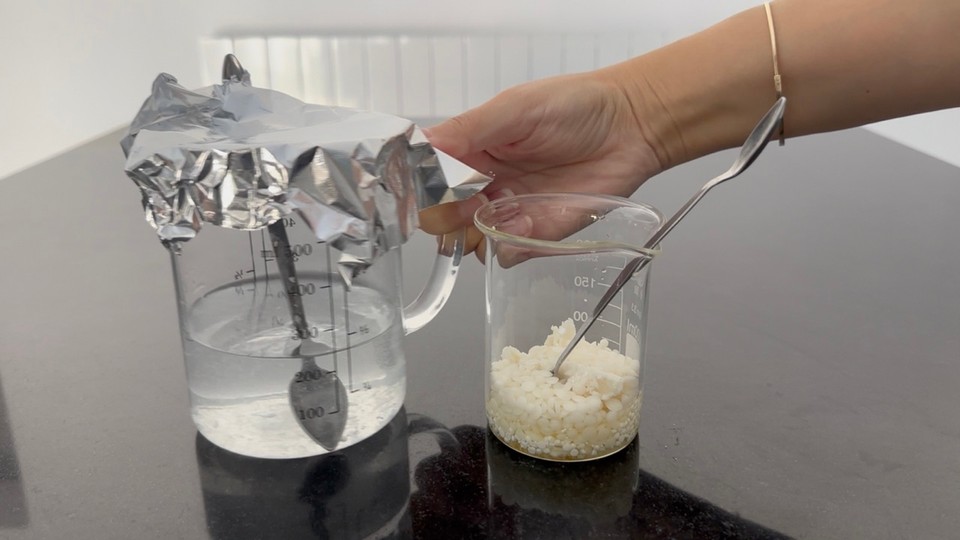
For the oil phase (phase B), I used cottonseed oil as a carrier oil. You can use any carrier oil you prefer, such as avocado, olive, hazelnut, sweet almond, jojoba, argan, aloe vera, sunflower, rice bran, or macadamia oil. Each carrier oil has a different content and stability, so consider that when choosing one. Avocado oil, for example, is heavier than other oils, while sweet almond oil is considered more light than other oils.
Also in phase B is Mango butter (INCI Name: Mangifera Indica (Mango) Seed Butter). Mango butter is extracted from the seeds of the mango fruit (Mangifera indica). It is semi-solid at room temperature. Mango butter is an excellent emollient that helps to moisturize the skin deeply. Mango butter is considered non-comedogenic. You can use other butters to make this moisturizer, such as Shea butter or Cocoa butter. Cocoa butter will result in a slightly greasier and thicker product.
In the oil phase (phase B), I used cetyl alcohol, which is a fatty alcohol derived from natural sources (like coconut oil or palm oil). Other than having emollient properties, it helps to stabilize the emulsion and gives the final product a silky and smooth texture. Cetyl alcohol also helps with achieving a thicker consistency in the final product. You can replace it with Cetearyl Alcohol or Stearyl Alcohol.
For an emulsifier, I used Lamecreme (INCI - Glyceryl Stearate Citrate, Glyceryl Stearate), which is derived from the esterification of glycerin and citric acid with stearic acid (which can be sourced from vegetable oils such as palm oil, coconut oil, or soy oil). Lamecreme provides emollient properties and a creamy texture to the product. You can use other emulsifiers such as emulsifying Wax NF, Montanov 68 or Olivem 1000. Consider that each emulsifier has different properties and results in different consistency.
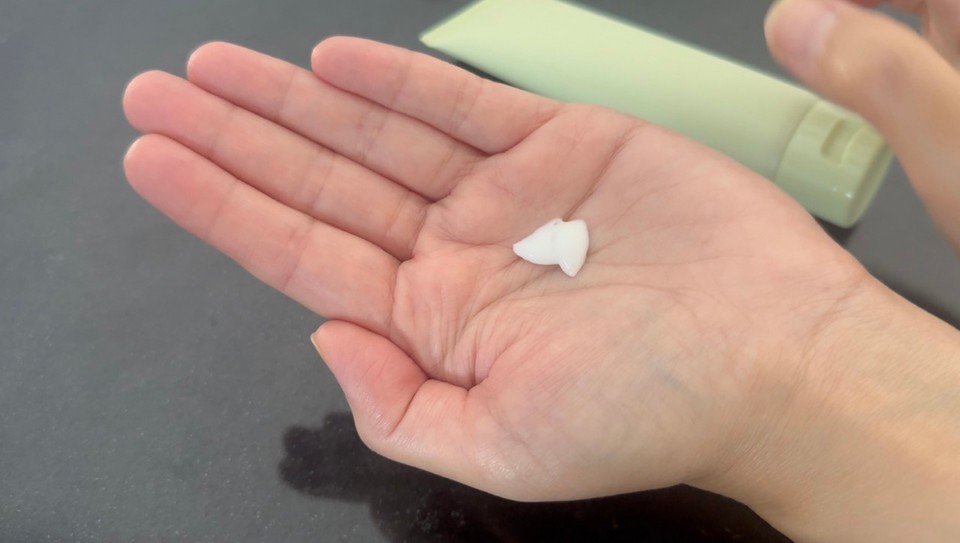
Phase C (the cool down phase) has the preservative and fragrance.
I used Cosgard (INCI - Benzyl Alcohol, Dehydroacetic Acid, Aqua) as the preservative. You can use other broad-spectrum preservatives. If you need to use 1% of your chosen preservative, reduce the 0.2% from the distilled water to adjust the formula.
As mentioned at the beginning of this post, you can skip the fragrance oil and add the amount to the carrier oil. If you have sensitive skin, you might want to skip the fragrance to avoid irritation.
Now that I've gone through the ingredients in this formula, it's time to make the body moisturizer. Use the calculator to adjust the amount you wish to make.
Method:
- Make a slurry in a heat-resistance beaker by combining the glycerin and the gum. Creating a slurry by mixing glycerin and xanthan gum before adding water helps prevent the gum from clumping when it is added to water. The slurry method also ensures that the xanthan gum is fully hydrated and dispersed evenly in the mixture.

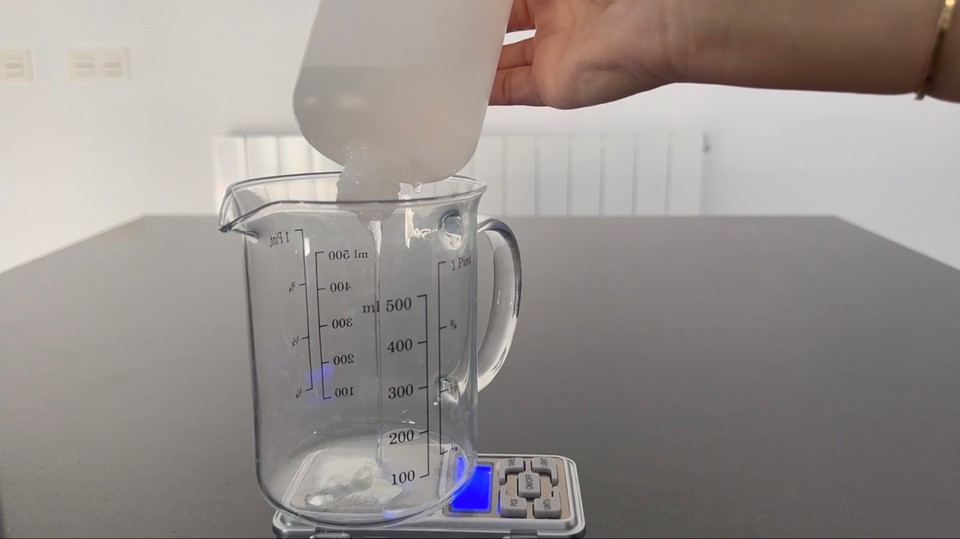
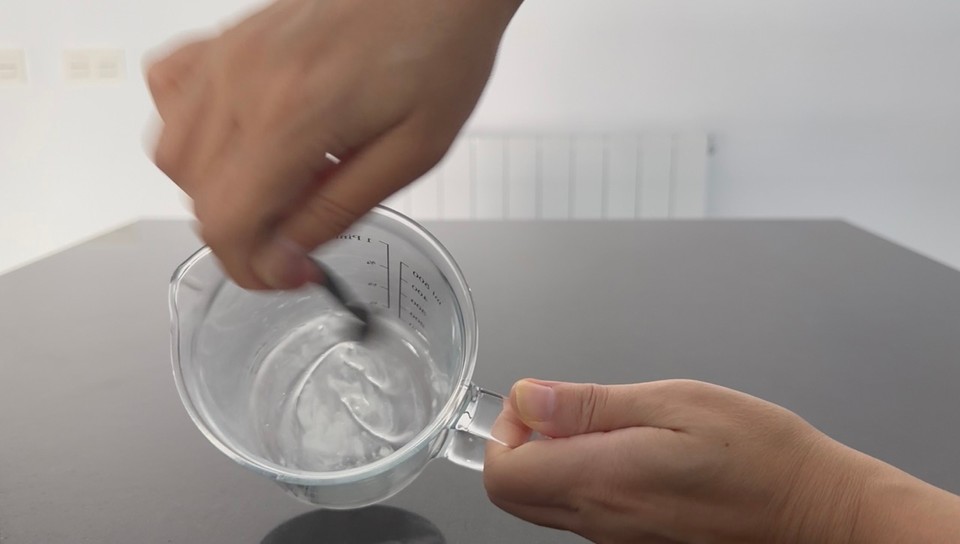
- Add the distilled water.
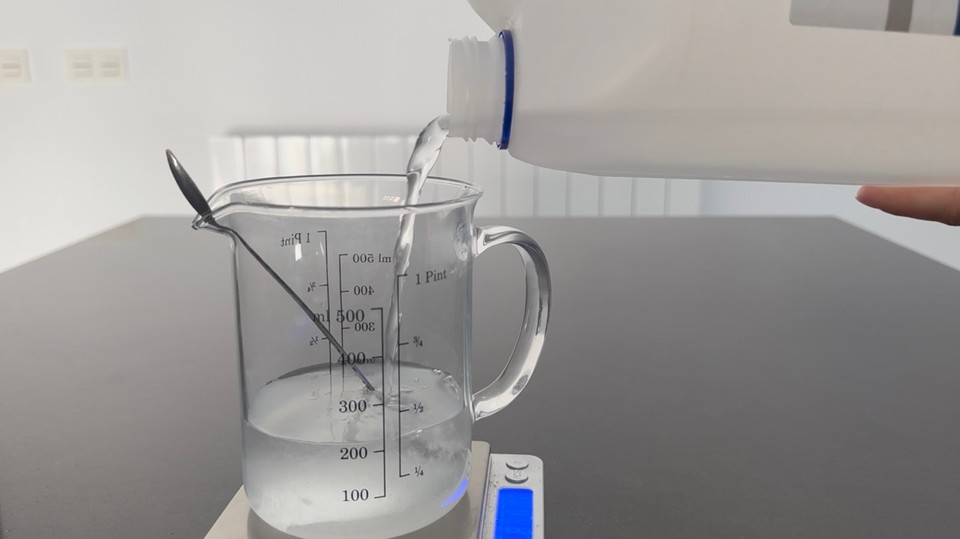
- Add the Allantoin, mix.
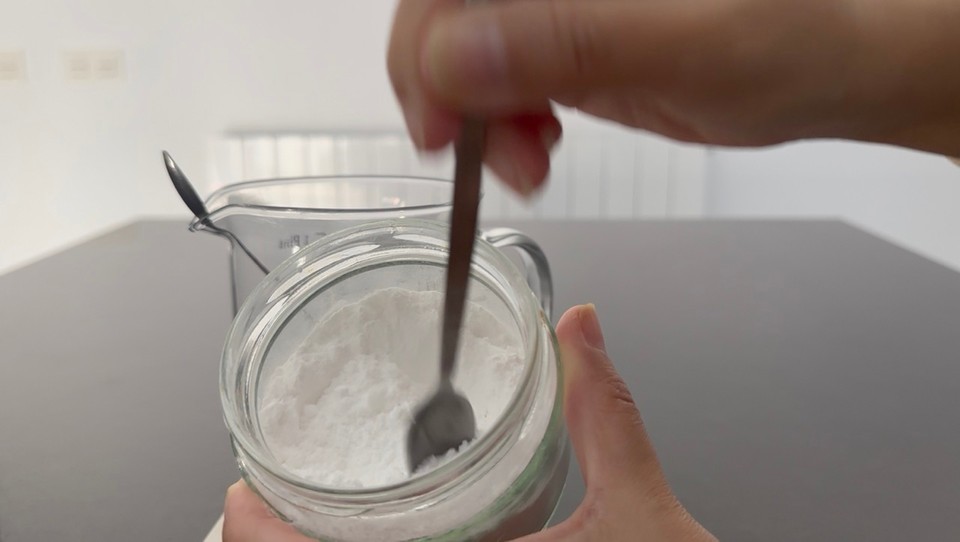
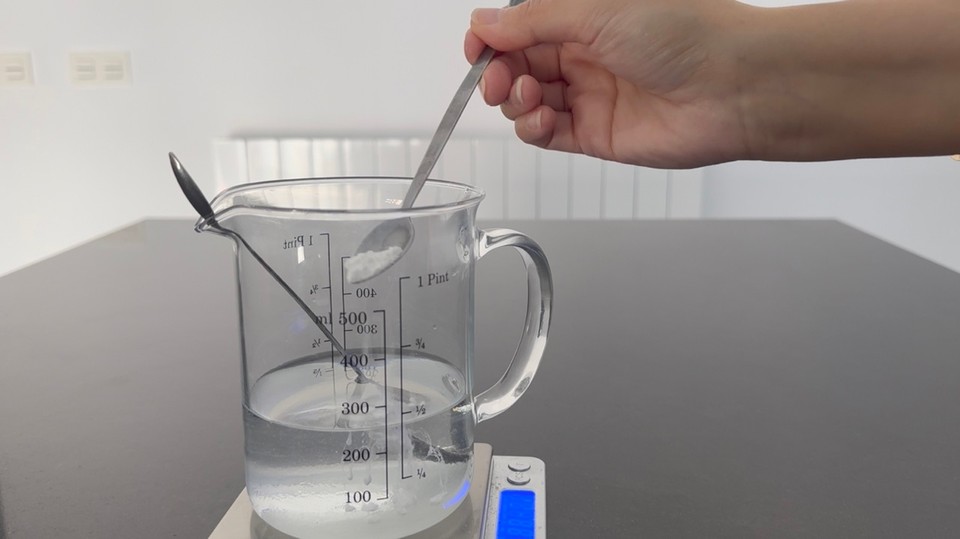
- Cover the water phase with aluminum foil to minimize evaporation. (when working with bigger batches, you should scale your water phase before heating and after removing it from the heat. Calculate the water evaporated during the heating and add the missing amount to the water phase beaker).
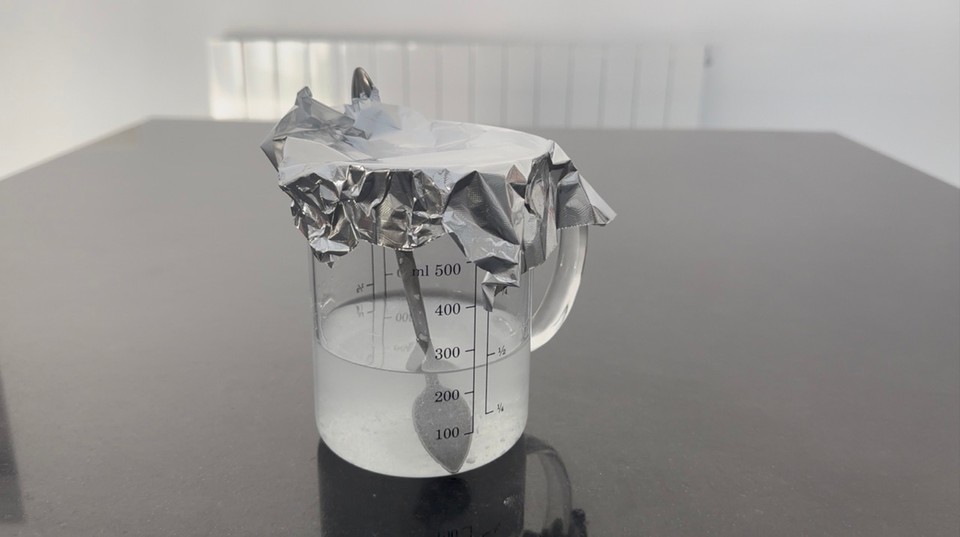
- In another heat resistance beaker, add phase B ingredients.


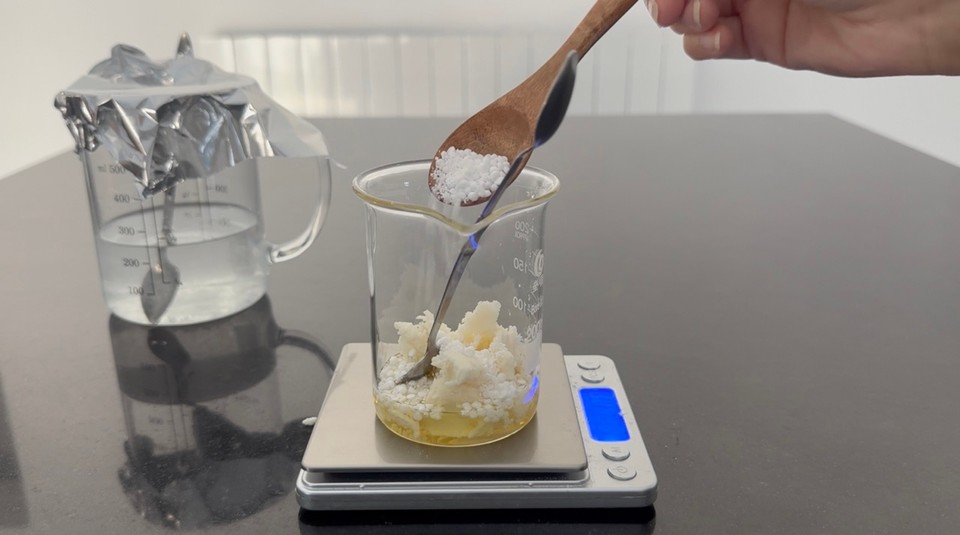

- Place phases A and B into a double boiler for 15-20 minutes on low-medium heat (around 55°C).
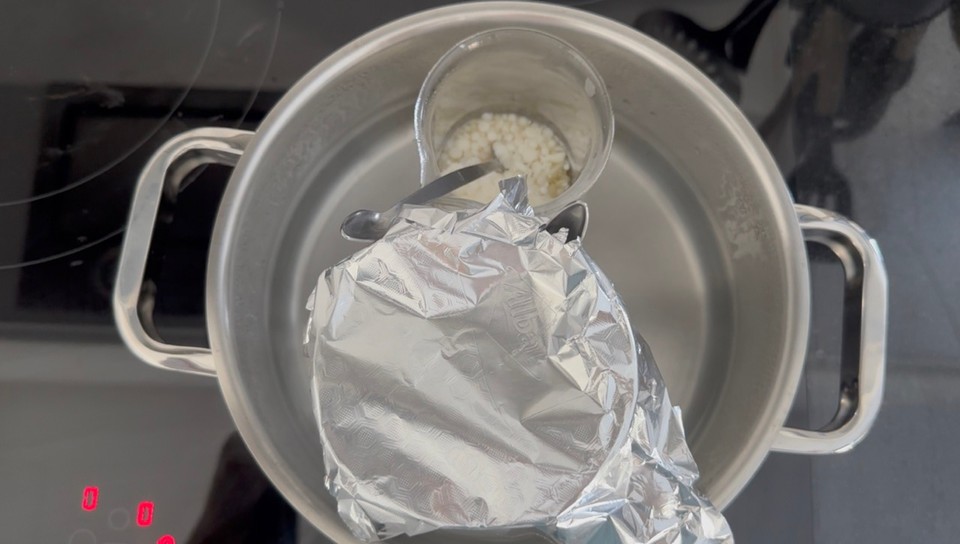
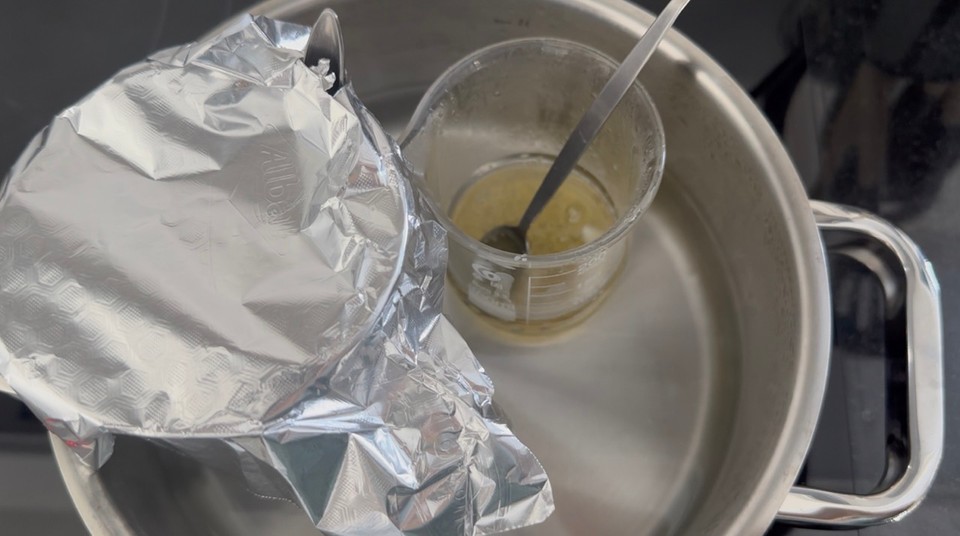
- Prepare phase C in a different container, set aside.
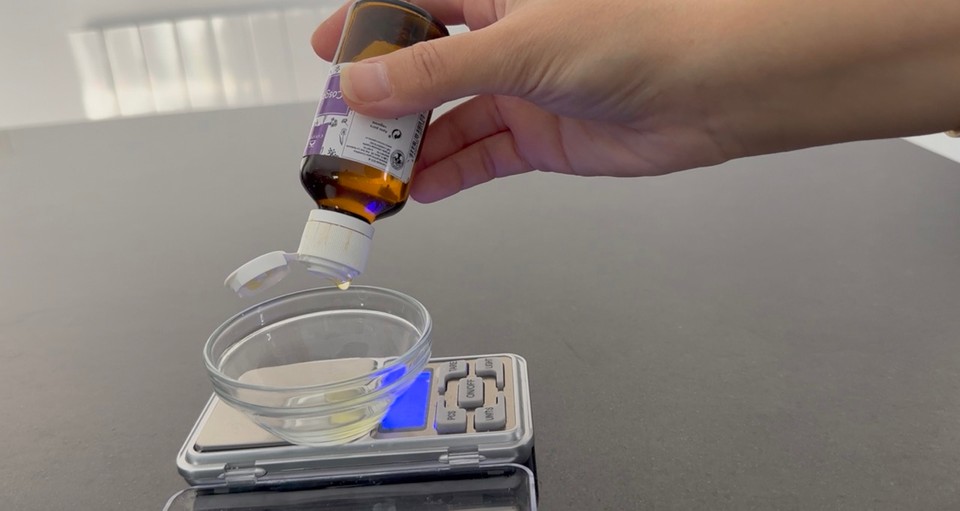

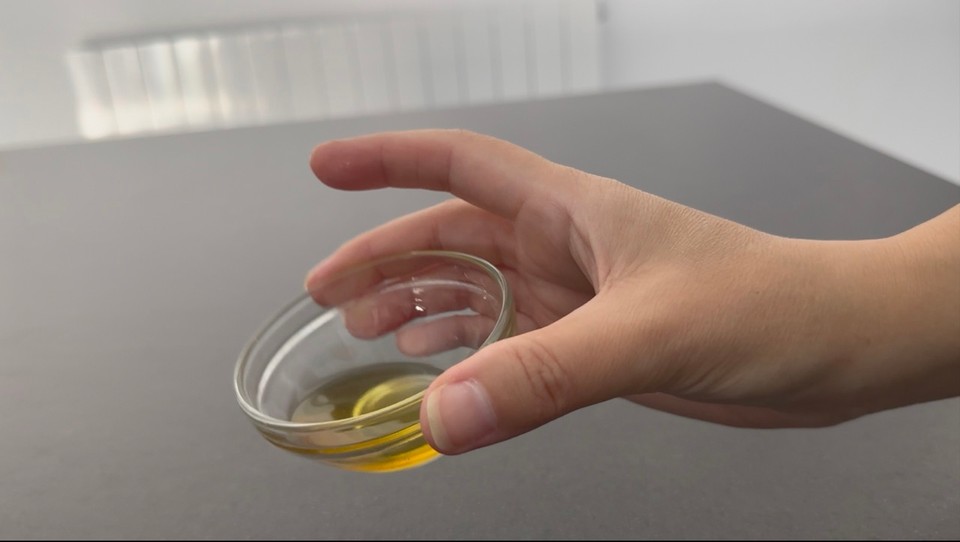
- Remove phases A and B from the heat.
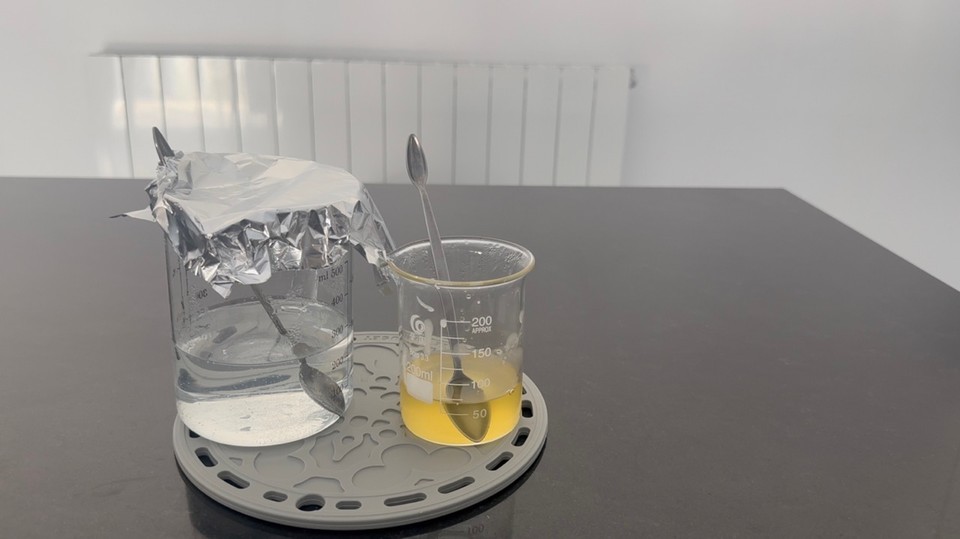
- Combine phases A and B with an immersion blender for 1-2 minutes. Leave the emulsion to cool.
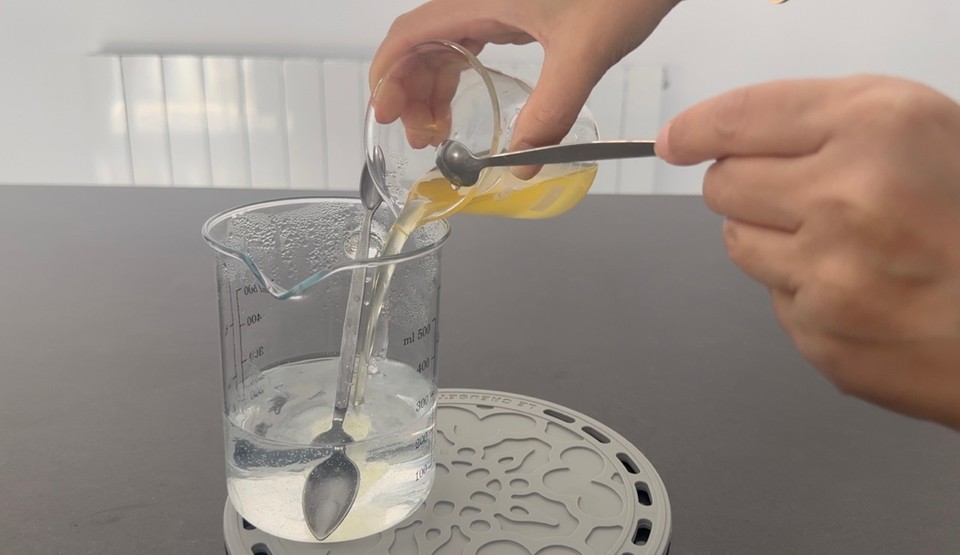


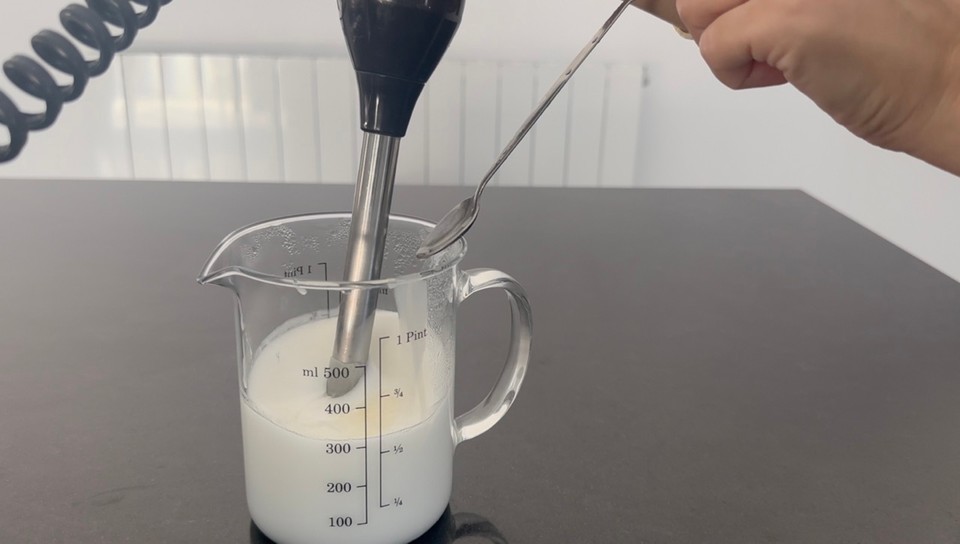

- When the emulsion has cooled to 40°C or less, check the pH and adjust if necessary. More on pH adjustments here. pH of 5-6 is fine.


- Add phase C and mix to combine.


- Pour into a pump bottle or a tube container (using a syringe). Final consistency will form after 6-8 hours.



